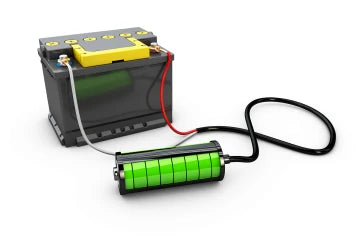
In today's world, harnessing renewable energy has become increasingly important, and solar power stands out as a leading source of clean and sustainable electricity. As more homeowners and businesses look to adopt solar energy, it is crucial to understand the role of solar battery banks in optimizing solar power utilization. In this article, we will explore the concept of a solar battery bank, its working principle, and how these banks are interconnected to enhance energy storage capabilities.
1. What is a Solar Battery Bank?
A solar battery bank, also known as a solar energy storage system, is a collection of rechargeable batteries that stores excess electricity generated by solar panels. These battery banks allow for efficient energy management by storing surplus power during periods of high solar production and releasing it when solar energy production decreases or during peak energy demand times. Essentially, solar battery banks act as a reservoir of electrical energy, enabling users to optimize their solar power utilization and reduce reliance on the traditional electrical grid.
2. How Does a Solar Panel Battery Bank Work?
The functioning of a solar battery bank can be understood in a few key steps:
a) Solar Panel Generation: Solar panels, typically installed on rooftops or open areas with maximum exposure to sunlight, convert sunlight into direct current (DC) electricity. The solar panels generate electricity as long as sunlight is available, providing a continuous source of power during daylight hours.
b) Charge Controller: The DC electricity generated by solar panels is directed to a charge controller, a device that regulates the charging process of the batteries in the solar battery bank. The charge controller ensures that the batteries receive the appropriate amount of charging current and protects them from overcharging, which could lead to damage or reduced lifespan.
c) Battery Storage: The charge controller directs the DC electricity to the solar battery bank, where it is stored for later use. The batteries in the bank store the excess solar energy, allowing users to tap into the stored electricity during times when solar panel output is insufficient or when electricity demand exceeds solar production.
d) Inverter: When power is needed, the stored DC electricity in the solar battery bank is converted into alternating current (AC) electricity through an inverter. AC electricity is the standard form of electricity used in homes and businesses, making it compatible with a wide range of appliances and devices.
e) Power Distribution: The AC electricity generated by the inverter can be used to power electrical devices and appliances directly. If the solar battery bank is connected to the electrical grid, surplus electricity can be fed back into the grid, allowing users to earn credits or receive compensation from utility companies through net metering programs.
3. How are Battery Banks for Solar Interconnected?
To maximize energy storage capacity and system efficiency, solar battery banks can be interconnected in various configurations, such as series and parallel connections:
a) Series Connection: In a series connection, the positive terminal of one battery is connected to the negative terminal of the next battery. This connection increases the overall voltage of the battery bank while maintaining the same capacity. Series connections are beneficial when higher voltages are required for specific applications or when multiple battery banks need to be combined.
b) Parallel Connection: In a parallel connection, the positive terminals of multiple batteries are connected together, as are the negative terminals. This connection increases the overall capacity of the battery bank while maintaining the same voltage. Parallel connections are useful when greater energy storage capacity is needed or when batteries with different capacities are used.
The interconnection of battery banks allows for scalability, enabling users to expand their energy storage capacity as their needs grow. Additionally, advanced solar battery bank systems often incorporate smart energy management systems that optimize energy flow and monitor battery health, ensuring efficient energy utilization and prolonging the lifespan of the batteries.
Conclusion
Solar battery banks play a vital role in maximizing the benefits of solar power systems by efficiently storing and utilizing excess electricity generated by solar panels. They offer users greater energy independence, resilience during power outages, and the ability to make the most of clean, renewable energy. By understanding the working principle of solar battery banks and how they can be interconnected, customers can make informed decisions when purchasing solar energy products, ensuring optimal performance and long-term cost savings. Embracing solar battery banks contributes to a sustainable future powered by clean and reliable solar energy.

0 comments